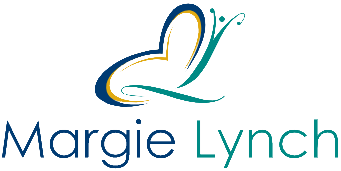Welcome to The Leader’s Toolbox! This month, we’re exploring practical tools that emerging leaders can use immediately to build influence and create positive impact. We start with the foundation: authentic leadership presence.
The Invisible Tool That Changes Everything
Leadership presence isn’t about commanding the room or having the loudest voice. Presence is about being authentic and connecting with yourself so others can connect with you. It’s the quiet confidence that makes people lean in when you speak.
Early in my HR career, I watched two managers handle the same challenging team meeting. One used authority and volume. The other used presence—calm curiosity, genuine listening, and clear communication. Guess which team responded with engagement rather than compliance?
That second manager had something I desperately wanted to understand: leadership presence that felt both powerful and authentic. Years later, I’ve learned that presence isn’t something you’re born with—it’s a skill you can develop.
The Presence Foundation
Authentic presence starts with emotional regulation. When you’re grounded in your values and comfortable with yourself, others feel it immediately.
Self-Awareness in Action: Before important interactions, take a moment to check in with yourself. What are you feeling? What outcome do you want? This simple practice prevents reactive responses that undermine presence.
Values Alignment: When your actions align with your stated values, people sense authenticity. This alignment builds trust faster than any other leadership behavior.
Energy Management: Your energy directly impacts others. Rushed, scattered leaders create rushed, scattered teams. Calm, focused leaders create the same.
The Three Pillars of Leadership Presence
Pillar 1: Confident Body Language
Amy Cuddy’s research on power posing shows that how you hold your body affects both how others see you and how you see yourself. Stand tall, make appropriate eye contact, and use open gestures. These aren’t just outward signals—they actually change your internal confidence levels.
Pillar 2: Intentional Communication
Influential leaders communicate with purpose. Before speaking, ask yourself: What’s the key message? How can I say this clearly? How can I connect this to what matters to my audience?
Pillar 3: Genuine Curiosity
Leaders who ask better questions get better results. Presence isn’t about having all the answers—it’s about asking questions that help others think more deeply.
Building Your Influence Toolkit
The Pre-Meeting Practice: Arrive five minutes early and use that time to center yourself. Review your intention for the interaction and visualize a positive outcome.
The Listening Multiplier: When someone speaks, resist the urge to immediately respond. Instead, ask one clarifying question. This simple habit dramatically increases your influence.
The Value Connector: In every interaction, find one way to connect the conversation to something the other person cares about. This creates engagement and shows you understand their priorities.
From Shy to Shine: My Presence Journey
I learned early that influence didn’t come from being the loudest. It came from understanding what others needed and helping them find it.
In my first management role at twenty-one, I felt like I was pretending to be someone else. I thought leadership meant being more assertive, more decisive, more “traditionally powerful.” I was exhausting myself trying to be someone I wasn’t.
A mentor helped me see that my natural empathy and emotional intelligence weren’t weaknesses to overcome—they were leadership strengths to develop. When I stopped trying to lead like someone else and started leading like myself, everything changed.
The Sensitivity Advantage
If you’re an emerging leader who feels “too sensitive” or “too quiet” for leadership, consider this: Research on emotional intelligence shows that leaders who understand emotions—their own and others’—create more engaged, productive teams.
Your sensitivity isn’t a leadership liability. It’s your secret weapon for building authentic influence.
Your Influence Action Plan
Week 1: Practice the pre-meeting centering routine before three important interactions.
Week 2: Focus on asking one clarifying question before responding in conversations.
Week 3: Identify your top three values and notice when your actions align with them.
Week 4: Observe leaders you admire and identify which presence qualities you want to develop.
The Leader Within
Every emerging leader I coach has the same concern: “What if I’m not leadership material?” Here’s what research and experience have taught me: Leadership presence isn’t about being perfect or having all the answers. It’s about being authentically yourself while serving others’ growth and success.
The leader within you is already there. These tools simply help you access and express that leadership more effectively.
Reflection questions: What’s one leadership presence quality you want to develop? How has someone’s authentic presence influenced you positively? Share your thoughts below—your experience might inspire another emerging leader.
Next Week: We’ll explore “The Feedback Revolution” – how to give and receive feedback that actually creates positive change.
Ready to build authentic leadership presence with personalized support? Explore ways to work with me here

